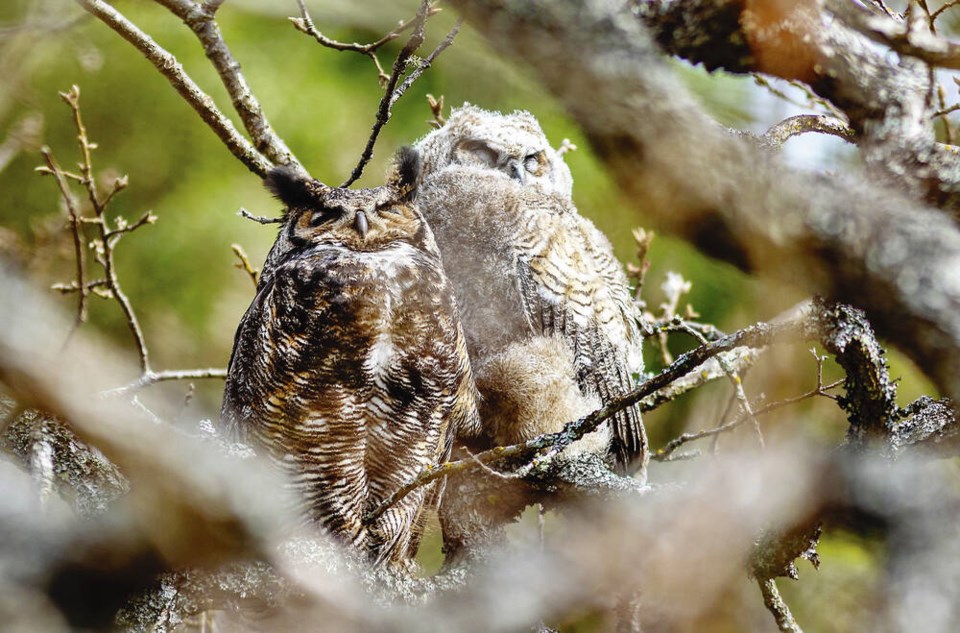A family of great horned owls nesting in Beacon Hill Park is drawing crowds as the youngsters learn to fly.
Photographers and birders flocked to the area this week after one of the young owls started leaving the nest to explore, known as “branching,” said Ann Nightingale, a volunteer with the Rocky Point Bird Observatory.
The young owl ended up on the ground for a little while, a normal part of the process of learning to fly, she said.
“They are using their claws to hang on to the branch. And then they might try to fly and and won’t get very far. They just don’t have the wing feathers to to gain true flight,” Nightingale said. “So they don’t usually crash hard to the ground. They kind of drift to the ground.”
Seeing the owl on the ground prompted some watching to worry that it needed help, but it’s important to recognize that the parent owls are still taking care of their young while its on the ground, and will even come down to feed it if necessary, Nightingale said. The juvenile can climb back up a tree on its own.
“The biggest danger is really from people and pets, followed by crows and ravens that might go after them,” she said.
Nightingale has only seen photos of the birds, but estimates the young are about three to four weeks old. The two youngsters appear to be about a week apart, she said.
Young owls and other birds across Greater Victoria are learning to fly and leaving the nest around this time of year, which means some people will likely come across young birds on the ground, Nightingale said.
People should keep their distance and keep pets away from them, she said.
If a baby bird is in immediate danger from a pet that might snatch it or a vehicle that could run it over, it’s okay to move a young bird into a bush or somewhere out of harm’s way, “but otherwise people should just let the parents take care of them, because they will.”
The family has likely been nesting in the park since January, when there were reports of a great horned owl divebombing joggers and snatching a hat. The bird was likely one of these parents, Nightingale said.
“They are fiercely protective of their young and they would not shy away from flying and even clawing a person that would get too close,” she said. “So, the thing is to not get close to the babies, even if they’re on the ground.”
One of the owl fledglings has now left the nest, said city spokesman Sheldon Johnson.
Victoria parks staff have cordoned off a large area to prevent people from getting too close to the nesting owls. New signs placed in the area ask people to stay on designated trails and not to approach, feed or touch the animals.
Staff are monitoring the situation to prevent further disturbances and using social media to dissuade people from visiting, he said.
The most common owl in North and South America, great horned owls have a speckled grey-brown body, reddish brown face and white patches on the throat, according to the Nature Conservancy of Canada. They often reuse other birds’ nests but also make their own in tree cavities, cliff ledges and on the ground.
Adults feed on small- to medium-sized mammals and are big enough to take a small cat. They also eat other birds, such as robins, ducks and geese.
>>> To comment on this article, write a letter to the editor: [email protected]



